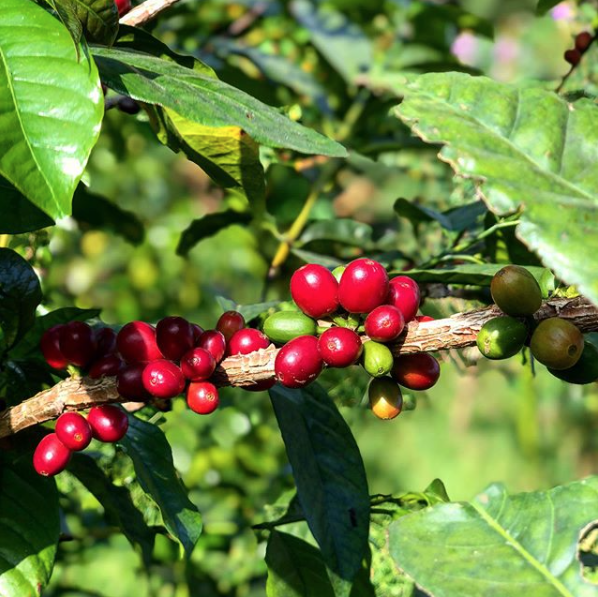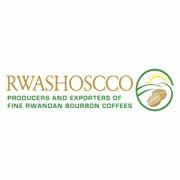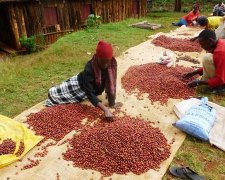History of coffee production and cultivation in Rwanda Coffee hometown people's Security of the Coffee Market in Rwanda
The history of coffee cultivation in Rwanda is very tortuous. In 1904, German missionaries introduced coffee to Rwanda. Exploited by Belgian colonists, coffee grew slowly and peaked in the 1930s. During this period, mainly large quantities, low-grade coffee production. The instability of colonial rule led to the Rwandan genocide in 1994. In 100 days, more than 800000 people were murdered and more than 250000 women were raped. These events led to the collapse of the infrastructure of the economy and the coffee industry. After the end of the genocide and war, Rwanda was United in search of a better future. The coffee industry has not been left behind. The need to restore its main cash crop sector led to the formation of the third wave of the coffee movement. The campaign focuses on improving the coffee production system. Organizations such as the Partnership for Agriculture in Rwanda (PEARL) and the Sustainable Partnership for Rural Business and Agricultural Development (SPERAD, led by Dr. Timothy Schilling, founder and CEO of Worlds Research) have helped in this process. Over the past decade, the coffee production process in Rwanda has been impressive. It is currently the world's ninth largest producer of Arabica coffee and the country's largest exporter. Coffee cultivation provides livelihoods for more than 450000 small farmers.

In recent years, coffee bean production in Rwanda has increased. Better income prospects encourage farmers to produce high-quality Arabica coffee as well as other crops for household consumption.
Farmers produce high-quality Arabica coffee as well as other crops for household consumption. An entrepreneur and farmer in Jakenko explained how he finally succeeded. In a country known as the "land of coffee", it may not be surprising. In this country known as the country of the Thousand Mountains, you will find high-quality Arabica coffee beans and other household consumption crops. In this country known as the "land of thousands of mountains", you will find high-quality coffee production. Rwanda has the ideal conditions for coffee production: high altitude, rich volcanic soil, sufficient rainfall, continuous flowering, and at these high elevations.

Coffee was first introduced to Rwanda in the early 20th century. By the 1930s production had been extended to the whole country. In the 1980s, coffee production was affected by falling prices. Coffee production fell to its lowest point after the 1994 genocide. Coffee is usually grown with potatoes, sorghum, beans, sweet potatoes and other vegetables to provide income for rural families and feed them. Provide income for rural families while supporting them. There are about 500000 coffee growers in Rwanda, and their living conditions are poor. In Rwanda, about 500000 coffee farmers live in poverty. In recent years, the output of the professional market has increased.
The market for Rwandan coffee is expanding. If the Rwandan boutique coffee market continues to grow, the future of his family and many other people in rural areas will be guaranteed.
Important Notice :
前街咖啡 FrontStreet Coffee has moved to new addredd:
FrontStreet Coffee Address: 315,Donghua East Road,GuangZhou
Tel:020 38364473
- Prev

Characteristics and Story of Export Coffee with Fair Trade Certification of characteristic Coffee Brand Cooperative in Rwanda
RWASHOSCCO Rwanda Little holder Specialty Coffee is a farmer-owned company focusing on the marketing, export and roasting of the best quality coffee beans in Rwanda. RWASHOSCCO is a farmer-owned marketing, export and baking company. RWASHOSCCO was founded in 2005, when the PEARL/USAID project was coming to an end. The idea comes from Timothy Schilling.
- Next

Coffee origin affects the taste of boutique coffee beans. Rwanda single coffee brands recommend climate-friendly.
The origin of coffee has a great influence on the taste of coffee beans. The quality of the soil, the altitude, and even the rainfall in an area determine what kind of coffee can be grown there and the taste of the coffee produced. Coffee producing areas are often classified as mainland-based categories, which is a good start. South American coffee tastes different from African coffee, while Indonesian coffee tastes like
Related
- Detailed explanation of Jadeite planting Land in Panamanian Jadeite Manor introduction to the grading system of Jadeite competitive bidding, Red bid, Green bid and Rose Summer
- Story of Coffee planting in Brenka region of Costa Rica Stonehenge Manor anaerobic heavy honey treatment of flavor mouth
- What's on the barrel of Blue Mountain Coffee beans?
- Can American coffee also pull flowers? How to use hot American style to pull out a good-looking pattern?
- Can you make a cold extract with coffee beans? What is the right proportion for cold-extracted coffee formula?
- Indonesian PWN Gold Mandrine Coffee Origin Features Flavor How to Chong? Mandolin coffee is American.
- A brief introduction to the flavor characteristics of Brazilian yellow bourbon coffee beans
- What is the effect of different water quality on the flavor of cold-extracted coffee? What kind of water is best for brewing coffee?
- Why do you think of Rose Summer whenever you mention Panamanian coffee?
- Introduction to the characteristics of authentic blue mountain coffee bean producing areas? What is the CIB Coffee Authority in Jamaica?

